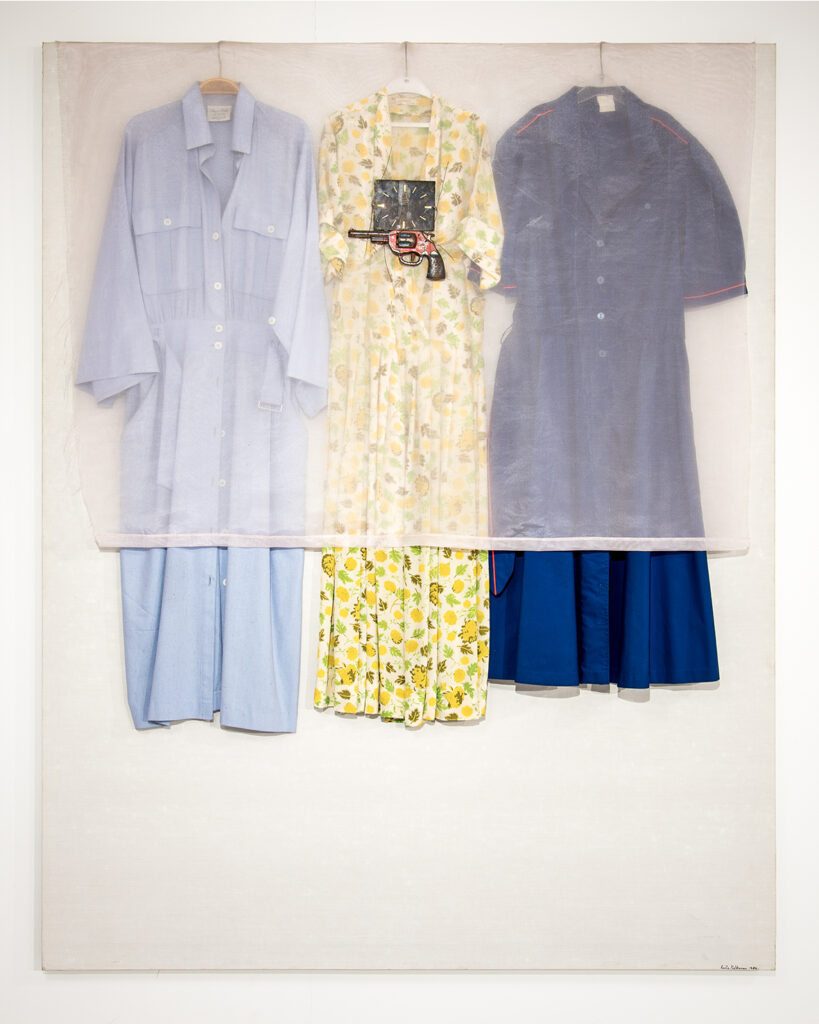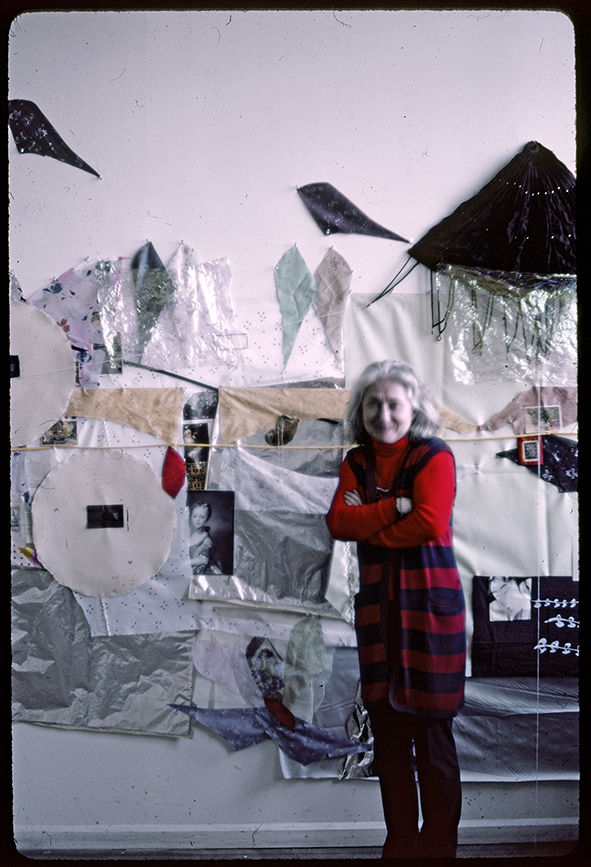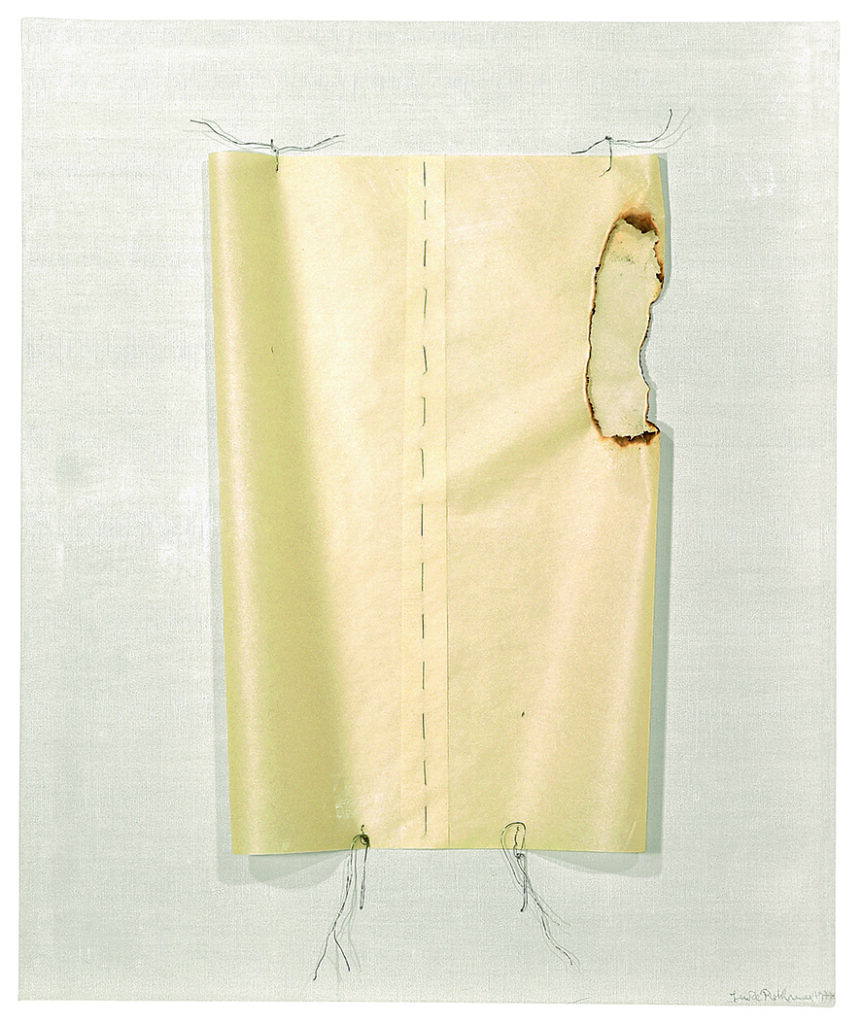
Lenke Rothman – Life as Cloth
21.9 2024 – 19.1 2025
This autumn’s exhibition “Life as Cloth” presents a large selection of works by Lenke Rothman (1929–2008). Rothman was a Swedish-Hungarian artist, writer, and Holocaust survivor who arrived in Malmö with the Red Cross in 1945, and thereafter lived in Sweden for most of her life. Rothman’s prolific artistic production consists of paintings, drawings, installations, books, sculptures, objects and textiles.
Traces of Life
The exhibition “Life as Cloth” focuses on Lenke Rothman’s unique, conceptual approach to her working materials. Lenke Rothman experimented early on with different kinds of material and explored their inherent narrative potential. By insisting on the ability of materials to speak, express, and remember, she created multifaceted and deeply personal works throughout her sixty-year-long artistic career. She frequently used unconventional artistic materials and everyday objects. Buttons, safety pins, tickets, items of clothing, receipts, plastic bags – traces of life – were patched together in complex and surprising ways. Many of the objects and motifs are connected to childhood memories and family life. She collected material in a way that is recognisable after experiences of war and trauma, of the Holocaust, where losing everything results in a later need to ensure that nothing more can be taken away.
How life can be preserved
In her art, Rothman allows different parts of her reality to coexist: the lifelong, ever-present wound and the everyday aspects of life. The past and the present run in parallel, and in her artistic practice they become an invitation for the viewer to be more attuned to the symbol-filled world around us, to moments and objects that pulse with life. Lenke Rothman’s artistic practice and writings can be seen as an answer to the question that preoccupied her: “How can life be saved and preserved from constant ongoing destruction?” In an exhibition of Rothman’s work, the art appears as a form of ethical necessity, not just as a means of expression for her as an individual artist, but for a society to grieve, to keep going, and to strive towards a better future.
Thread, fabric, and stitche
Thread, fabric, and stitches are central elements in Rothman’s visual world. Her interest in stitching was not only connected to the sewing machine that occupied a central place in her childhood home due to her father’s work as an umbrella maker, but also to a personal healing process, to the body’s scar tissue and the visible traces of lived experience that cannot be hidden. At the same time, a larger act of mending took place, where she, stitch by stitch, attempted to merge the past with the present. Or, as she herself wrote: “Stitch together what has been with what is, and pull the thread into what is yet to be.” Here is a reference to the Jewish concept of “tikkun olam”, which means to repair the world and the social contract that holds us together or tears us apart. Lenke Rothman’s process of sewing, glueing, and patching can be seen as a way of stitching together a fragmented experience, where time, objects, and memories form the fabric of life.
Curators: Rebecka Katz Thor, Runo Lagomarsino & Mats Stjernstedt.
Thanks to the reference group of Jewish residents of Malmö.
Lenke Rothman (1929–2008) was a Hungarian-born Jewish artist and author. As a sixteen-year-old, in 1945, she arrived alone in Malmö with Red Cross transportation, after surviving two Nazi concentration camps – Auschwitz and Bergen-Belsen. Out of ten family members, only two survived the Holocaust: Lenke and her oldest brother, Alexander. Upon
her arrival, Rothman was sick with tuberculosis, and spent her first six years in Sweden in convalescent homes, sanatoriums, and hospitals.
Lenke Rothman chose to remain in Sweden, and in 1951 she began her studies in painting at Konstfack in Stockholm. In
the same year she participated in her first exhibition “Foreign Artists in Sweden” at Konstnärshuset in Stockholm. Her work has
been exhibited in solo shows at venues including the Royal Academy of Fine Arts, Stockholm (1976), the Jewish Museum, New
York (1987), Galleri Augusta, Sveaborg (1987), Bror Hjorths hus, Uppsala (1999), Dunker´s Cultural Center, Helsingborg (2008),
Sörmlands museum, Nyköping (2018) and the Living History Forum, Stockholm (2018). The exhibition “Manifestations of Life” was
shown at Malmö Konsthall and Göteborgs Konsthall 1989–1990. Lenke Rothman also published the books “Quality of Life” (1980),
“OK OK NO NEW YORK” (1984), “Regn” (Rain) (1990) and “Stygn” (Stitches) (2001).
Vernissage for “Life as Cloth” will be celebrated on Friday, September 20th, from 19 to midnight. The Red Cross Malmö Branch will co-host the vernissage. The event is held in collaboration with Moderna Museet Malmö, whose vernissage starts at 17. Warmly welcome!

Unknown photographer
